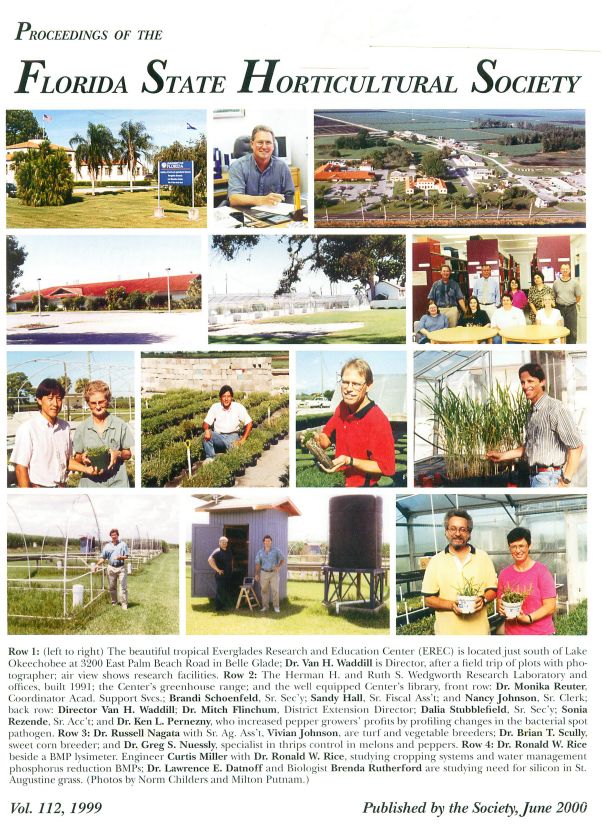Abstract
Studies were conducted during the 1998-99 season to investigate the effects of early (Oct.) or late (Nov. or Dec.) preharvest gibberellic acid (GA) application (with or without Silwet) on harvested fruit quality and quality retention during storage of 'Fallglo' and 'Sunburst' tangerines (both complex mandarin hybrids), 'Minneola' tangelo (hybrid of C. paradisi x C. reticulata), and 'Marsh' grapefruit (C. paradisi Mart.). When deemed appropriate, fruit were degreened with ethylene for up to 24 hours. All fruit were washed, waxed and stored at 5CFF (10 C) to simulate commercial handling. Early application of GA + Silwet resulted in significantly greener fruit in all cultivars tested. Effects on green color retention were less apparent when GA was applied alone or late, although significant differences from controls were occasionally observed. Early treatments of GA + Silwet also resulted in fruit with significantly greater peel puncture resistance than control fruit. GA + Silwet applied late only increased peel puncture resistance of 'Fallglo' and 'Sunburst' tangerines. Total soluble solids (TSS), titratable acids (TA) and TSS:TA ratio were not significantly affected by the GA treatments except in 'Minneola' where only the GA + Silwet treatment significantly reduced TSS and TSS:TA ratio at harvest. GA + Silwet treatments reduced postharvest pitting of 'Fallglo' after one week of storage, but GA effects disappeared as storage time and pitting severity progressed. Postharvest pitting was minimal or not detected in the other cultivars. Despite the greater peel strength, there were no cases where GA treatments significantly reduced postharvest decay or disorders, other than postharvest pitting.

